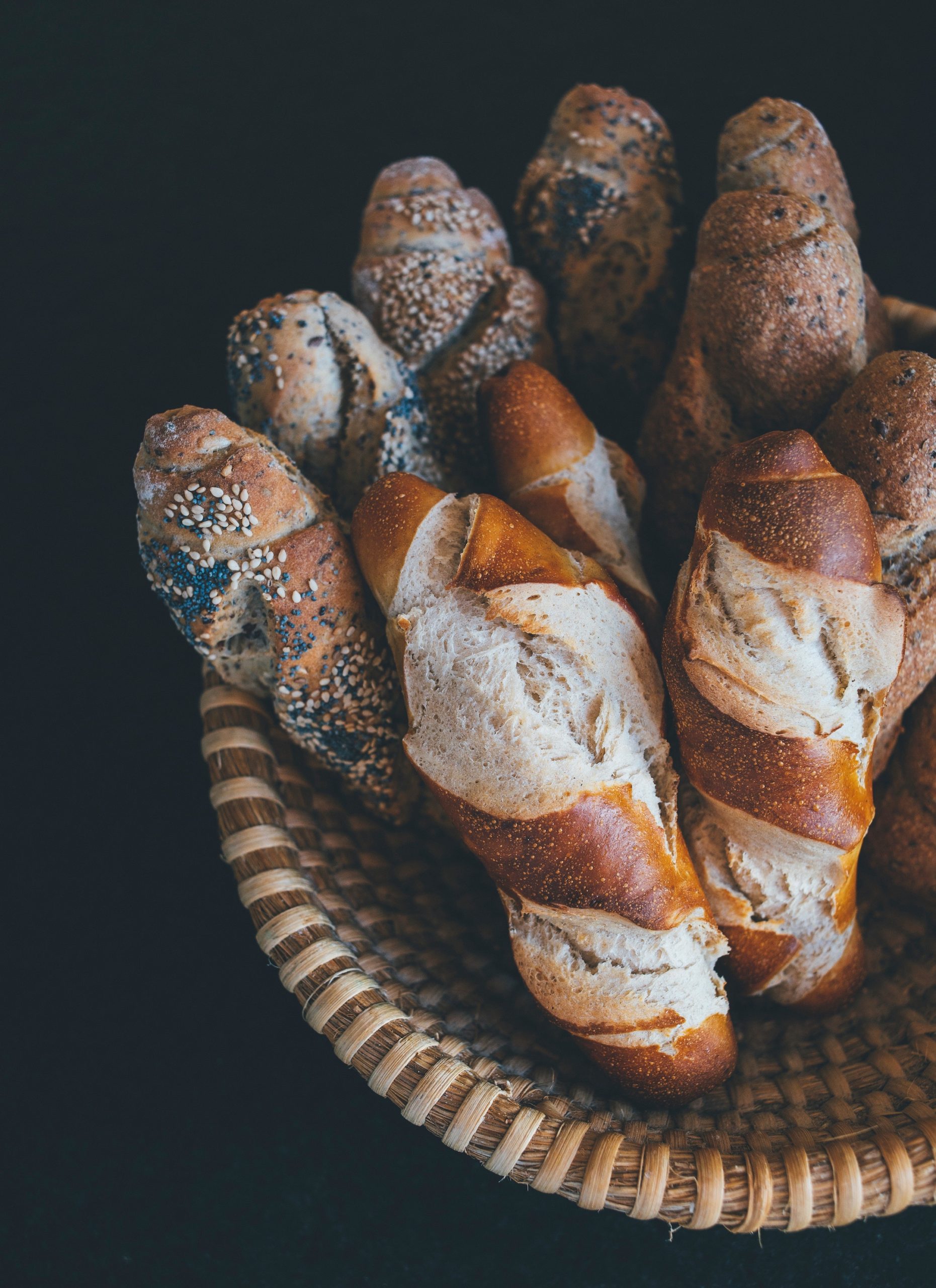I’m going to start out by stating the obvious: Carbs are delicious. Pasta? Yes, please. Potatoes? Literally in any form. Bread? Bring it on.

Aside from being yummy, carbs have some other interesting qualities:
- 4 calories per gram (compared to 4 for protein and 9 for fat)
- Hydrogen and oxygen in a 2:1 ratio (like water) and also contain carbon.
- Carbs are found in most foods, not just ones that come to mind like bread and pasta
- They are the body’s main energy source
Carbohydrates have a bit of bad reputation, though, right? High carb foods are often thought of as a “splurge” and they are heavily restricted on many fad diets. But eliminating carbs for weight loss is not good for your overall health, as doing so deprives the body of fiber and vital micronutrients.
It’s important to be informed about carbohydrates so you can make decisions that support your goals without cutting out an entire food group and its benefits. I’ve outlined information on carbohydrates below in order to empower you when making your nutrition decisions.
Simple vs. Complex Carbohydrates
An important distinction we need to make is that between simple carbs and complex carbs. The main factor in differentiating is the speed at which they are digested. Simple carbohydrates, also known as monosaccharides, break down quickly for a burst of energy – Can you say sugar rush? Simple carbs include foods like:
- Fruits
- Milk and milk products
- Soda
- Candy
- Juices

Complex carbs, also known as polysaccharides, provide the body with energy that lasts longer – less of a spike and crash system. They are also typically more nutritious than simple carbs, as they are found in foods such as:
- Whole grains
- Oats
- Wild rice
- Brown rice
- Barley
- Leafy green vegetables
- Carrots

Related Post: Macro Profile: All About Fat
As you may have been able to guess, complex carbohydrates are the better source of energy. You get more ‘bang for your buck’ energy-wise, and they are typically the more nutritious option. However, if you must choose a simple carbohydrate, always opt for the natural option (fruit, milk) over the processed one (candy, sugary drinks).
Fiber
As we’ve already covered, carbohydrates are broken down so that the body can use them as energy. Fiber is the exception to that rule, as it cannot be broken down by the body. For this reason, it actually has zero calories.
There are two types of fiber: Soluble and insoluble.
Soluble fiber turns into a gel substance when it comes in contact with water. It is responsible for slowing digestion so that you can absorb all of the important nutrients you consume. It also has some heavy-hitting benefits like lowering bad cholesterol, lowering the risk of heart disease, and regulating blood sugar. Find soluble fiber in foods such as nuts, seeds, oat bran, barley, peas, and lentils.
Insoluble fiber has unique benefits, as well. Here’s a personal question for you: Did you have a healthy bowel movement today?

If so, you can thank insoluble fiber, as it is responsible for bulking up stool. (If not, maybe you need a little more!) Insoluble fiber also works to prevent colorectal cancer, as it helps you get rid of any toxic waste that may be lingering in your lower digestive tract. For these benefits make sure you are consuming plenty of beans, lentils, whole grains, flax, and vegetables.
Fiber is found under the “Total Carbohydrates” section of nutrition labels. For a food to be considered a “high fiber” food, it must contain more than 5 grams. You want to aim for about 25-30 grams a day. (Americans are only getting half of that, on average).
The Bottom Line
Be smart in choosing your carbohydrates, as they are not all created equal. Although there’s no need to avoid them completely, choosing nutrient-dense carb options such as whole grains, oats, barley, flax, and leafy green vegetables will contribute more to your energy level and less to your waistline. Eliminating carbs from your diet will leave you deprived of fiber, vitamins, and minerals.
Experts recommend that 45-65% of your caloric intake be carbohydrates. However, many personal health factors determine your best macronutrient ratio – activity level, food intolerances, and health conditions. I recommend keeping a food journal to track not only your meals, but also any mood swings, odd symptoms, and changes in sleep. This is a great way to determine which foods keep you feeling your best.

